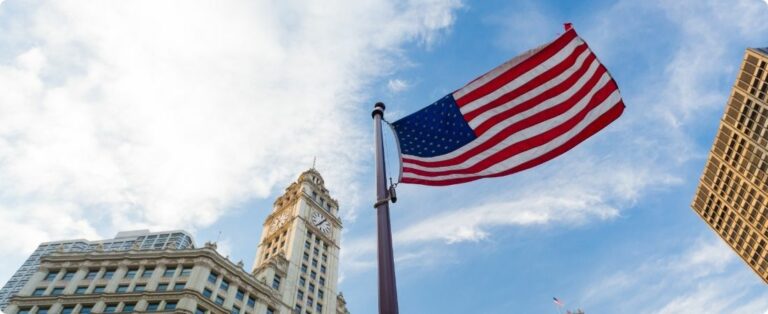Gross Domestic Product (GDP) fell 9.7% in the second quarter of 2020 (compared to the first quarter of 2020), in the seasonally adjusted series. Compared to the same period in 2019, GDP fell by 11.4%. Both rates were the most intense falls in the series, which began in 1996. In the four quarters ending in June, there was a drop of 2.2% in relation to the four immediately previous quarters.
In current values, GDP in the second quarter of 2020 totaled R$ 1.653 trillion, with R$ 1.478 trillion in Value Added (VA) at basic prices and R$ 175.4 billion in Product Taxes net of Subsidies.
The investment rate in the second quarter of 2020 was 15.0% of GDP, below that observed in the same period in 2019 (15.3%).
In the 1st half of 2020, GDP fell by 5.9% compared to the same period in 2019. In this comparison, there was a positive performance for Agriculture (1.6%) and drops in Industry (-6.5%) and Services (-5 ,9%). The supporting material for the Quarterly National Accounts is on the right.
GDP falls 9.7% in relation to the immediately previous quarter
Under the effects of the COVID-19 pandemic and social isolation, GDP fell by 9.7% in the second quarter of 2020, compared to the first quarter of 2020, in the seasonally adjusted series. This was the most intense drop in the historical series, which began in 1996. Among the segments, the biggest drop was in Industry (-12.3%), followed by Services (-9.7%). Agriculture showed a positive change of 0.4%.
Among industrial activities, the highlights are the falls in Manufacturing Industries (-17.5%), in Construction (-5.7%), in the activity of Electricity and gas, water, sewage, waste management activities (-4. 4%) and in Extractive Industries (-1.1%).
In Services, the negative results were: Other service activities (-19.8%), Transport, storage and mail (-19.3%), Commerce (-13.0%), Administration, defense, public health and education and social security (-7.6%), Information and communication (-3.0%). On the other hand, there was a positive result in Financial, insurance and related services activities (0.8%) and in real estate activities (0.5%). From an expenditure perspective, Gross Fixed Capital Formation (-15.4%), Household Consumption Expenditure (-12.5%) and Government Consumption Expenditure (-8.8%) fell in relation to the immediately previous quarter .
Exports of Goods and Services grew by 1.8%, while Imports of Goods and Services decreased by 13.2% compared to the first quarter of 2020.
{module 442}
The drop of 11.4% in relation to the 2nd quarter of 2019 is the largest in the series, which began in 1996
Compared to the same period in 2019, GDP fell by 11.4% in the second quarter of 2020, which is the largest quarterly contraction recorded in the historical series, which began in 1996, for this basis of comparison. Value Added at basic prices fell by 10.8% and Taxes on Products Net of Subsidies fell by 15.6%.
Among the activities, Agriculture grew by 1.2%, in relation to the same period in 2019, which can be explained, mainly, by the performance of some agricultural products that have a relevant harvest in the second quarter and by productivity.
Industry had a drop of 12.7%, the most intense in the historical series, in this comparison. The Manufacturing Industry activity had the worst result (-20.0%), another negative record in the historical series, mainly influenced by the decline in vehicle manufacturing; of other transport products; of machinery and equipment; and in the textile and clothing industry. The second most intense decline came from Construction (-11.1%), corroborated by the reduction in occupancy and the production of its inputs.
The activity of Electricity and gas, water, sewage, waste management activities showed a drop of 5.8%, explained by the decline in the economy as a whole. On the other hand, Extractive Industries showed a positive variation of 6.8%, with an increase in oil extraction. The extraction of ferrous ores continues to fall, but at lower rates.
Services fell 11.2% compared to the same period in 2019, the biggest drop ever recorded in the historical series. The worst results were in Other service activities (-23.6%) and Transport, storage and mail (-20.8%). There were falls in Commerce (-14.1%), Administration, defense, public health and education and social security (-8.6%) and Information and communication (-3.2%). On the other hand, Financial activities, insurance and related services (3.6%) and Real estate activities (1.4%) presented positive results.
Household Consumption Expenditure contracted by 13.5%, an index that represents the biggest drop recorded in the historical series. This was the second negative result of this comparison after 11 quarters of progress. The index can be explained by social isolation in the country, the ban on the operation of some activities, especially services provided to families, in addition to the drop in the country's wage bill in the second quarter of 2020.
Gross Fixed Capital Formation fell by 15.2% in the second quarter of 2020 compared to the same period in 2019. The drop is justified by the negative results recorded in both the domestic production of capital goods and construction. Government Consumption Expenditure fell by 8.6% compared to the second quarter of 2019.
In the external sector, Exports of Goods and Services grew by 0.5%, while Imports of Goods and Services fell by 14.9% in the second quarter of 2020.
GDP falls by 2.2% accumulated in four quarters
The accumulated GDP in the four quarters ending in June 2020 contracted 2.2% in relation to the four immediately previous quarters. This rate resulted from a decrease of 2.1% in Value Added at basic prices and 3.0% in Taxes on Products Net of Subsidies. The result of Value Added in this type of comparison resulted from the following performances: Agriculture (1.5%), Industry (-2.5%) and Services (-2.2%).
Investment Rate was 15% in the 2nd quarter
The investment rate in the second quarter of 2020 was 15.0% of GDP, remaining below that observed in the same period of the previous year (15.3%). The savings rate was 15.5% against 13.7% in the same period in 2019.
First semester has a drop of 5.9% in GDP
GDP in the 1st half of 2020 fell 5.9% compared to the same period in 2019. On this basis of comparison, there was a positive performance for Agriculture (1.6%). In Industry (-6.5%) and Services (-5.9%) the performance was negative.
GDP reaches 1.7 trillion in the second quarter of 2020
Gross Domestic Product in the second quarter of 2020 totaled R$ 1.653 trillion, with R$ 1.478 trillion in Value Added at basic prices.
Source: DATA
READ TOO:
{module 441}










